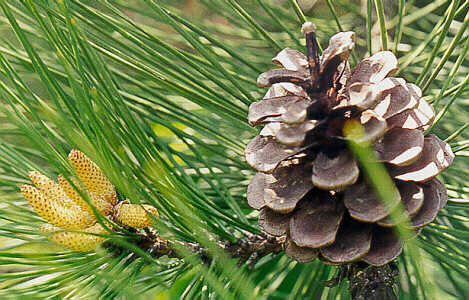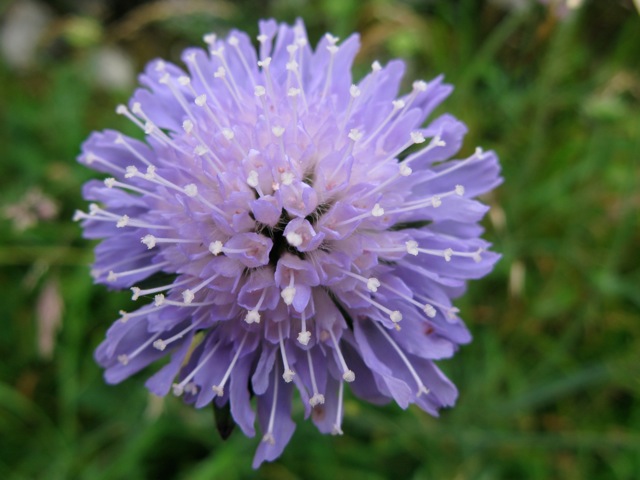Cone-bearing and Flowering Plants
- Page ID
- 184497
The seed plants include cone-bearing and flowering plants. These plants have several advantages over their seedless ancestors. They can reproduce without free-standing water (via pollination). Pollination occurs when pollen contacts female plant parts. Seeds develop to nourish and protect plant embryos. Seeds also allow plants to disperse to new locations.
The two major divisions of the seed plants are:
- Gymnosperm - seeds in cones
- Angiosperm - flowering plants (seeds in ovaries of flowers)
Gymnosperms
| Most gymnosperms are cone-bearing and evergreen. Pollen is produced in male cones, and eggs are produced in female cones. Seeds develop on the scales of female cones. Watch the Types of Gymnosperms animation to learn more about the four groups of gymnosperms: conifers, cycads, ginkgoes, and gnetophytes. |
|
Angiosperms
|
Angiosperms have seeds enclosed in some type of fruit. A flower is the reproductive structure of angiosperms, and a fruit is a mature ovary of a flower. Watch the Characteristics of Angiosperms animation, to learn more about flowers, fruits, and endosperm. Visit the Differences between Gymnosperms and Angiosperms page, and make sure you know the major differences between these two groups. Angiosperms also have more efficient vascular tissues than other plants. |
|
Watch this video on pollination, The beauty of pollination, to learn a little about all of the ways pollination can take places.



